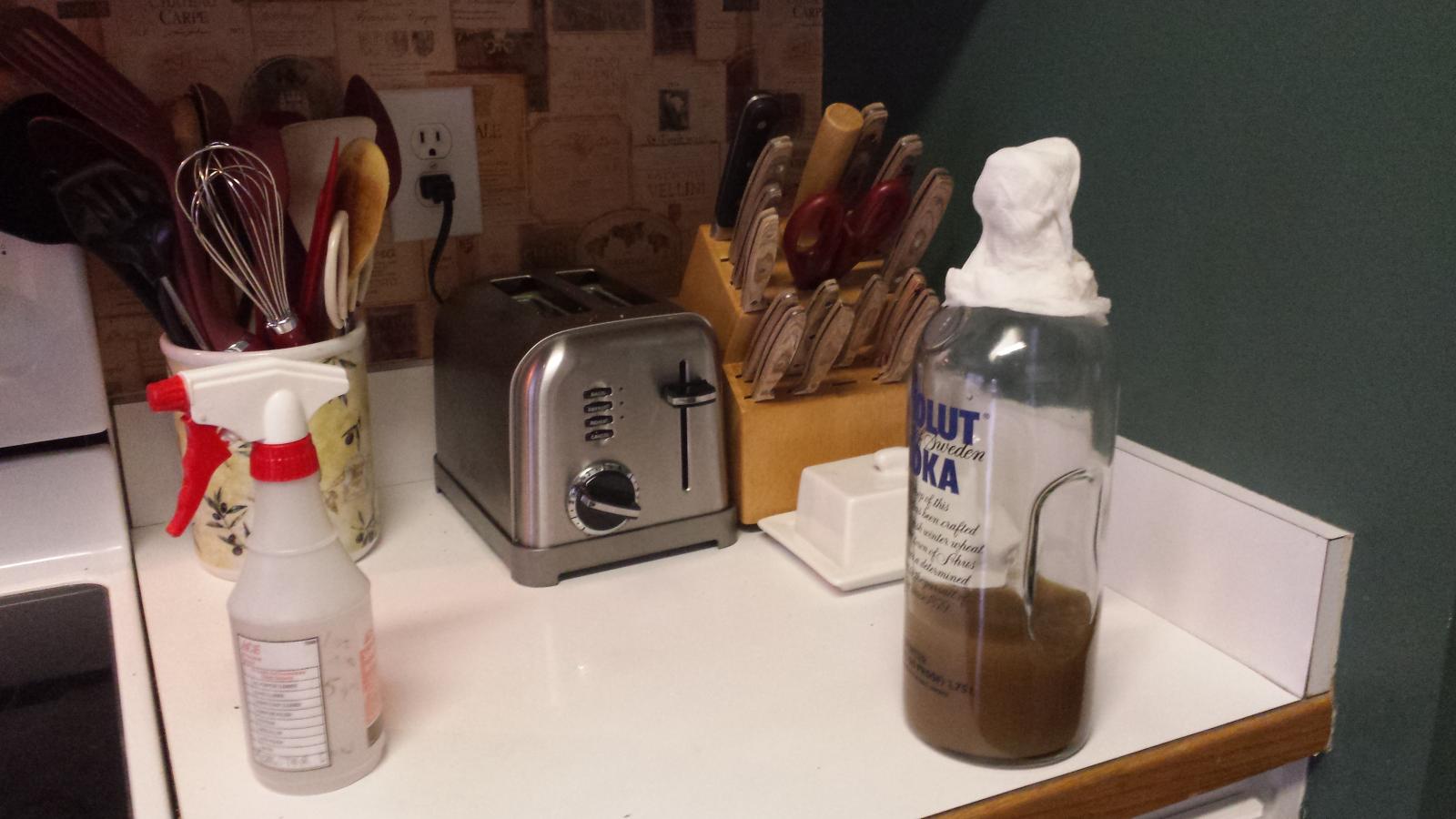reim0027
Well-Known Member
- Joined
- Apr 19, 2008
- Messages
- 439
- Reaction score
- 9
I did a Mr Malty Pitching calculation for my next brew (first time using Mr Malty  ). It recommends 1.2L for a starter. I only have a 1L flask, and I typically do starters at 16 ounces. I am using White Labs WLP 002 Ale yeast for an 1.046 target OG.
). It recommends 1.2L for a starter. I only have a 1L flask, and I typically do starters at 16 ounces. I am using White Labs WLP 002 Ale yeast for an 1.046 target OG.
I read a few threads about yeast starters, and there was some discussion about alternative vessels to use, including a 2L soda bottle. But there wan't much talk about specifics (in what I read) I was thinking something like this:
1. Make two batches in my flasks and transfer those 2 batches (for a total of 1.2L) into a 2L empty soda bottle. (Which, of course will be cleaned with Oxyclean, and sanitized with Starsan).
2. Cover and cool. Pitch the yeast.
3. Cover with a balloon to allow gas to escape.
First, does this sound reasonable? Second, if this is reasonable, is there anything I should be aware of? If it is not reasonable, does anyone have suggestions?
I appreciate your help.
 ). It recommends 1.2L for a starter. I only have a 1L flask, and I typically do starters at 16 ounces. I am using White Labs WLP 002 Ale yeast for an 1.046 target OG.
). It recommends 1.2L for a starter. I only have a 1L flask, and I typically do starters at 16 ounces. I am using White Labs WLP 002 Ale yeast for an 1.046 target OG.I read a few threads about yeast starters, and there was some discussion about alternative vessels to use, including a 2L soda bottle. But there wan't much talk about specifics (in what I read) I was thinking something like this:
1. Make two batches in my flasks and transfer those 2 batches (for a total of 1.2L) into a 2L empty soda bottle. (Which, of course will be cleaned with Oxyclean, and sanitized with Starsan).
2. Cover and cool. Pitch the yeast.
3. Cover with a balloon to allow gas to escape.
First, does this sound reasonable? Second, if this is reasonable, is there anything I should be aware of? If it is not reasonable, does anyone have suggestions?
I appreciate your help.



